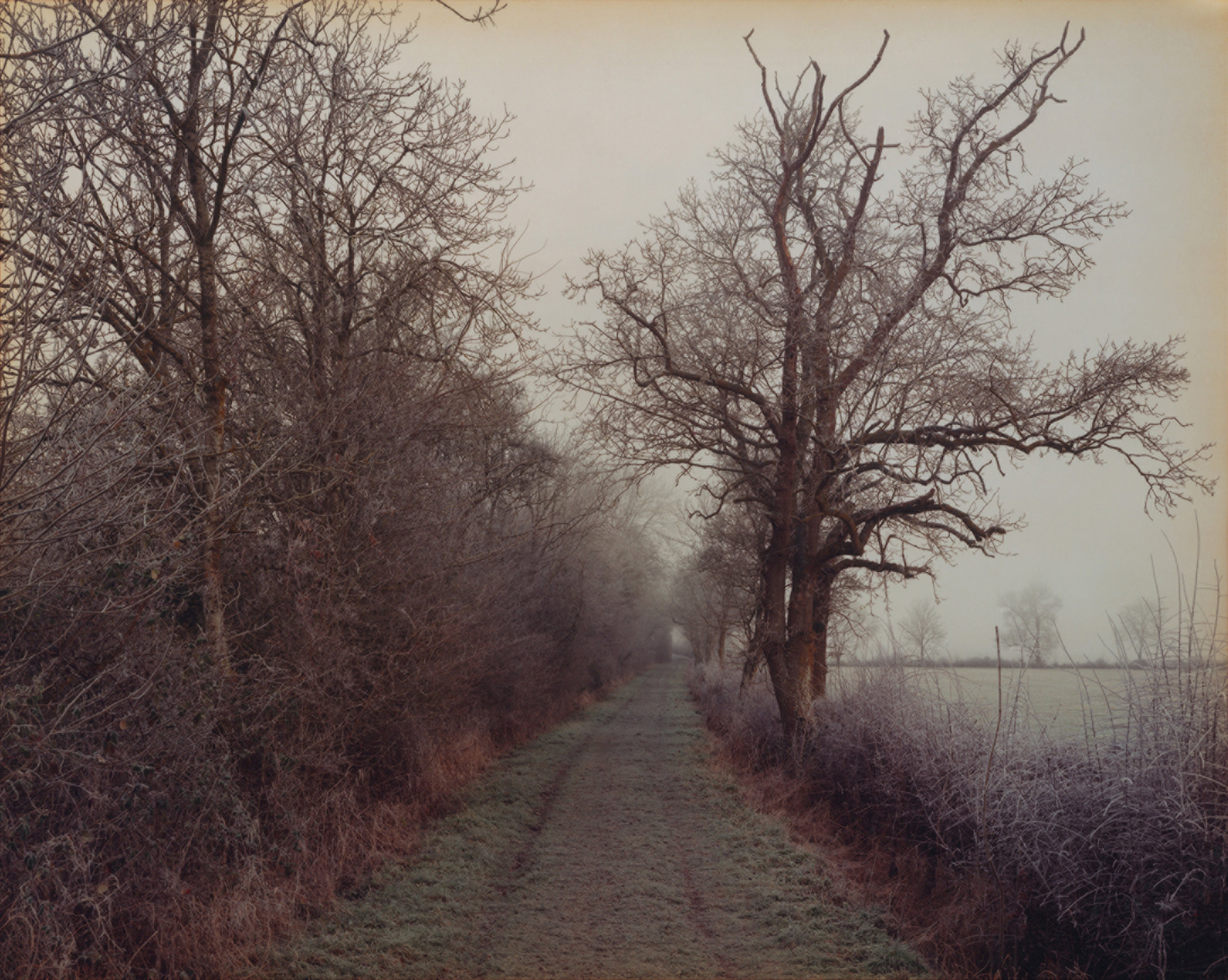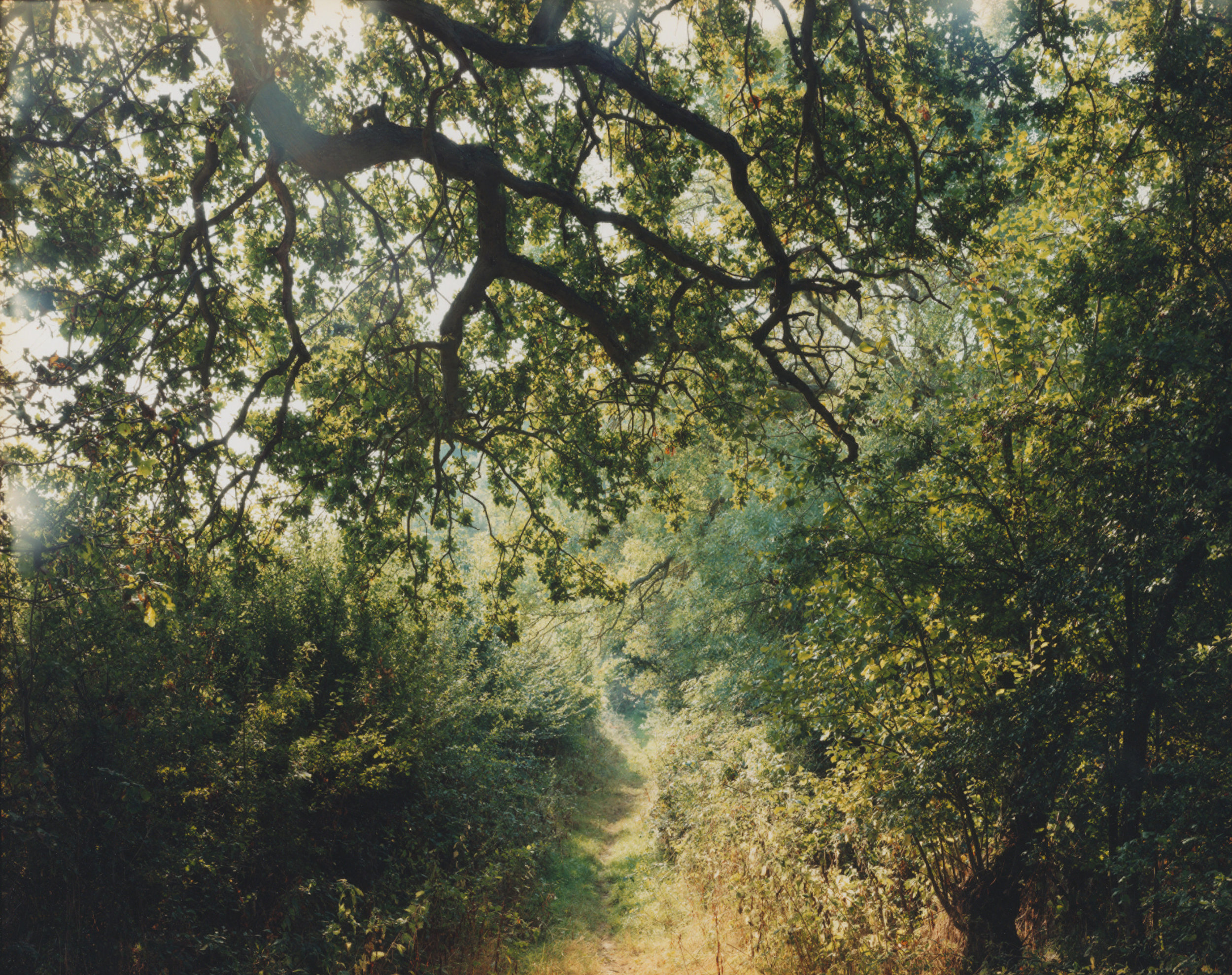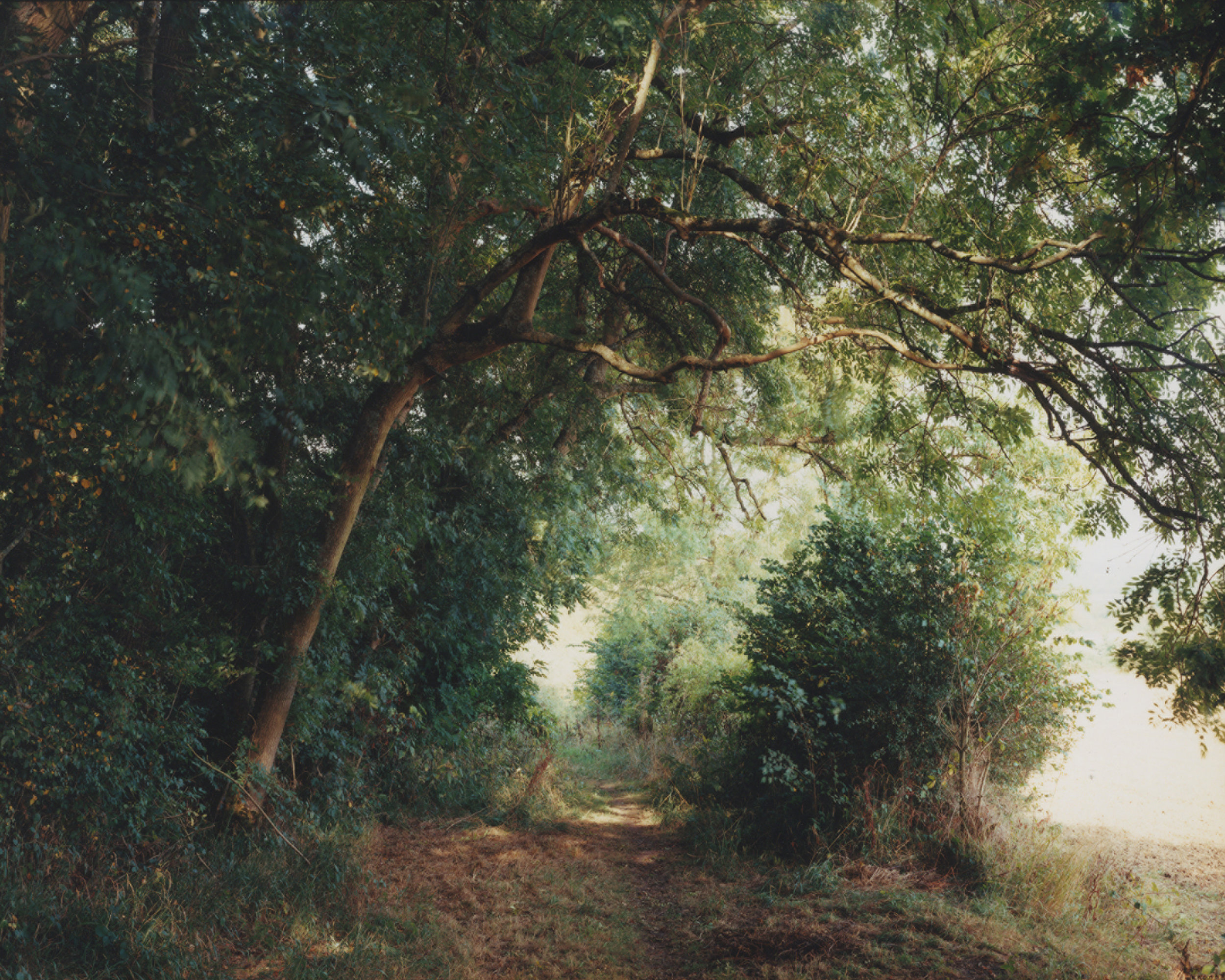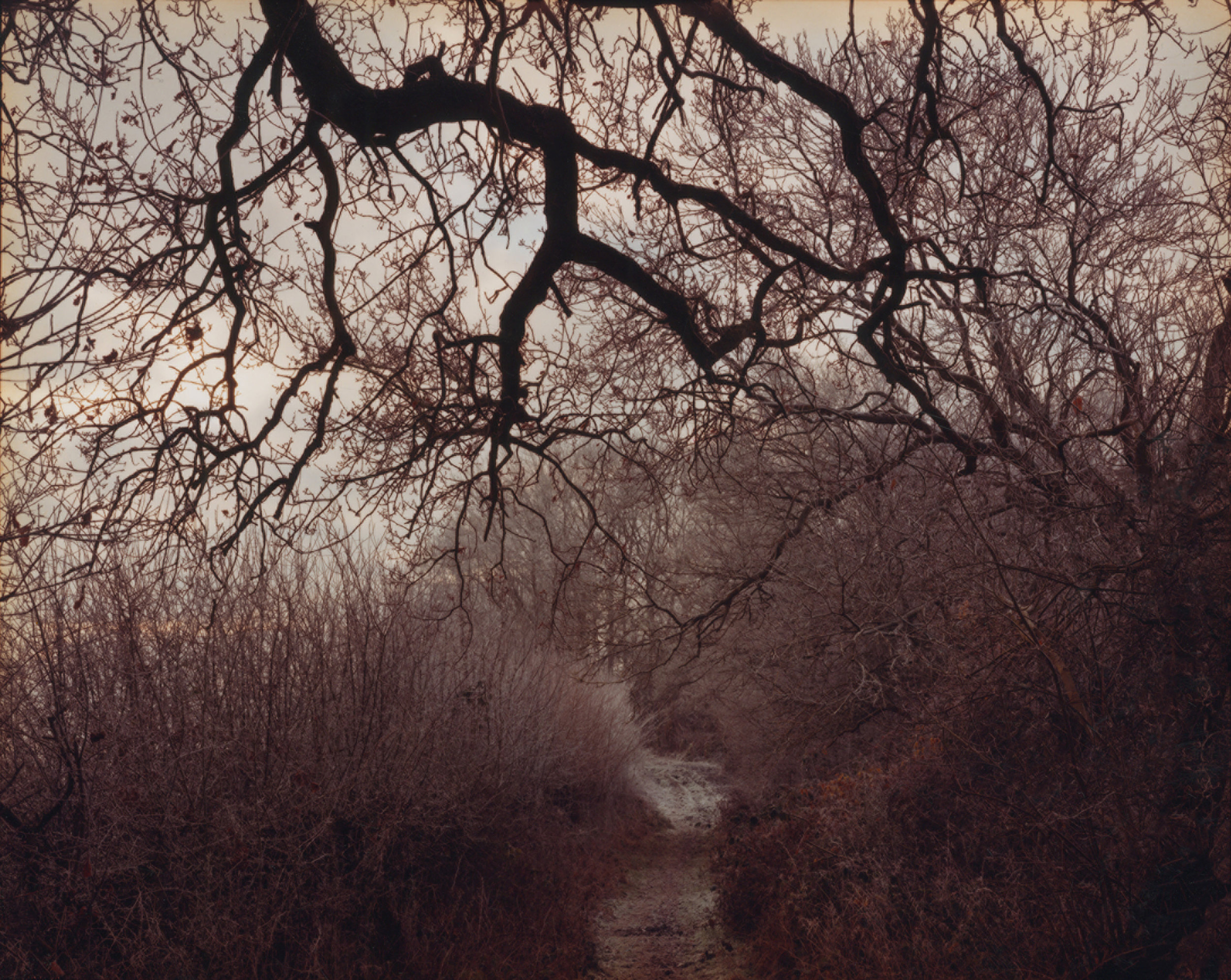
JOHN SPINKS
HARROWDOWN
It was a warm day in the late afternoon, 17 July 2003. Dr David Kelly, a 59-year-old Ministry of Defence scientist, took his final walk at a local beauty spot, Harrowdown Hill, near his home in Southmoor, 10 miles outside Oxford. He sat down against a tree in a small clearing, ingested 20 painkillers and slit his left wrist. His body was discovered a few hours later. Two days earlier Kelly had appeared in front of a House of Commons Foreign Affairs Committee about an interview he had given to the BBC. The interview suggested that evidence presented in the dossier used by the Blair government to win a vote to go to war in Iraq had used unreliable and unsubstantiated evidence. Key in this information was the infamous claim that Iraq could attack the UK within 45 minutes using weapons of mass destruction.
In Harrowdown Hill John Spinks explores the relationship the Iraq War had on the English landscape. The war had a cultural and political significance that affected the English national psyche in ways that still resonate today. As the writer and filmmaker Neil Mackay writes ‘[Iraq] summoned up the old demons of Empire. It was Britain’s last shudder of the imperial great game – it would be Blair’s Falklands. Instead, it became a bloody intractable mess with no winners and everyone – especially the Iraqi people – losing. The conflict simultaneously reinvigorated imperialism while shattering it. It was a national humiliation. The way in which the British political landscape has been shaped in recent years shows clear and indelible traces of this catastrophe.’
John Spinks visited Harrowdown Hill for a year, shooting on large format film capturing the passing of time in spectacular detail. The same locations are photographed again and again, sometimes months apart sometimes seconds. The images are intricate, multi-layered, and dense. They suggest an uncomfortable metaphor of international, national and personal politics, post-Iraq. Spinks’ photography uses a pictorial approach redolent of English landscape artists such as Constable, Selby and Goode, to re-examine the traditions of representation and its correlation with national identity. These images are punctuated by meticulous studies of single leaves taken from the site and blurred snapshots of military aircraft flying overhead from nearby Brize Norton airbase.
This is a limited artist edition in which John’s project has been reimagined and remixed into what you now hold in your hands.








